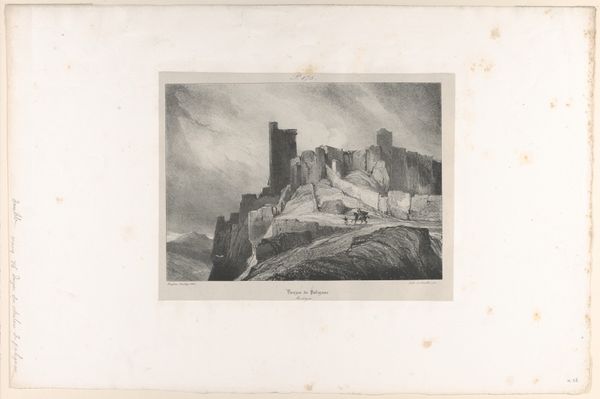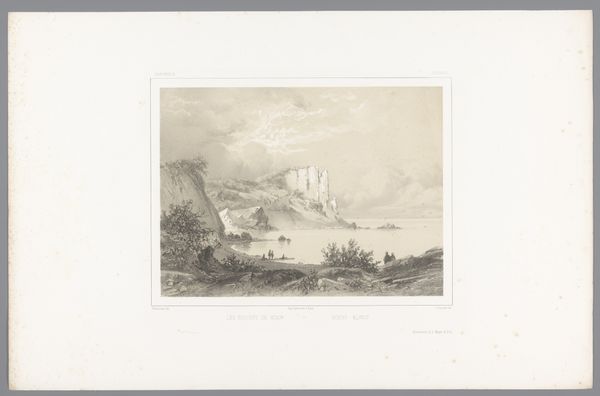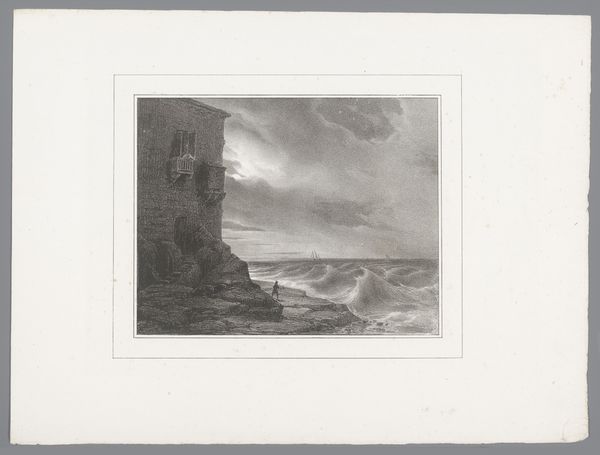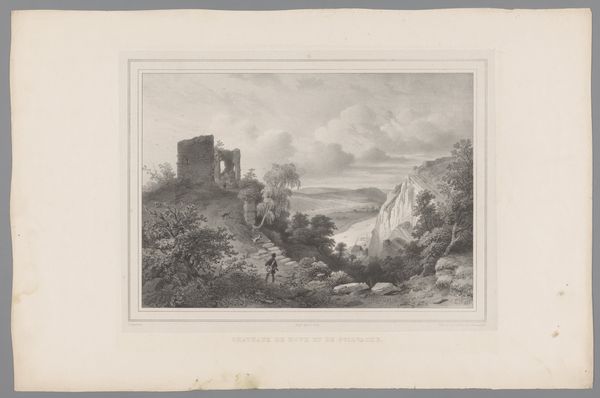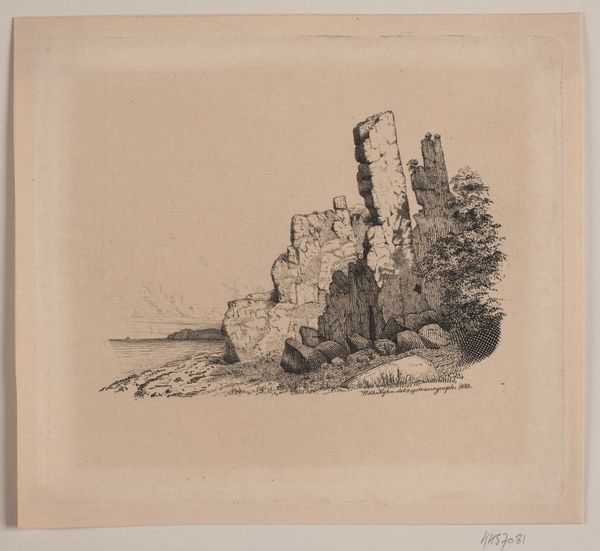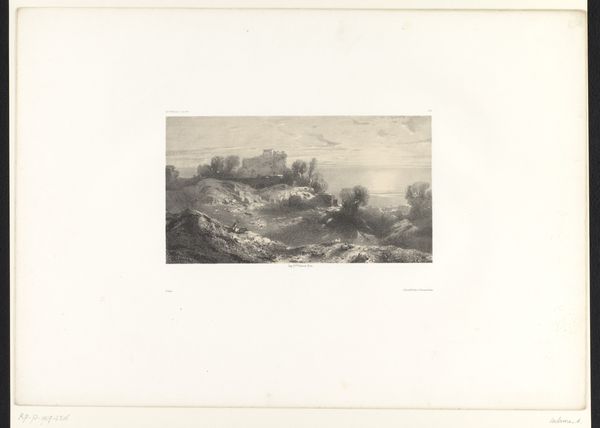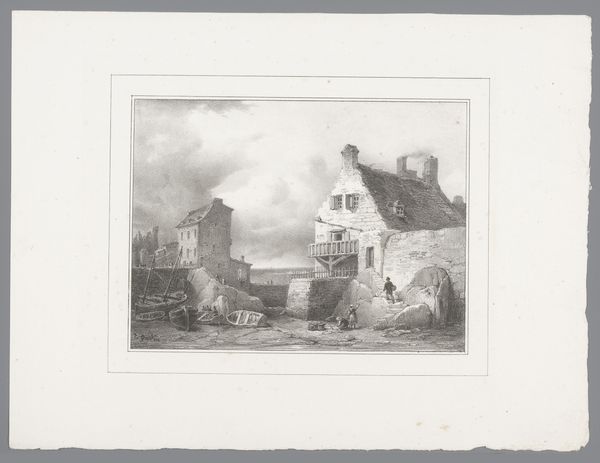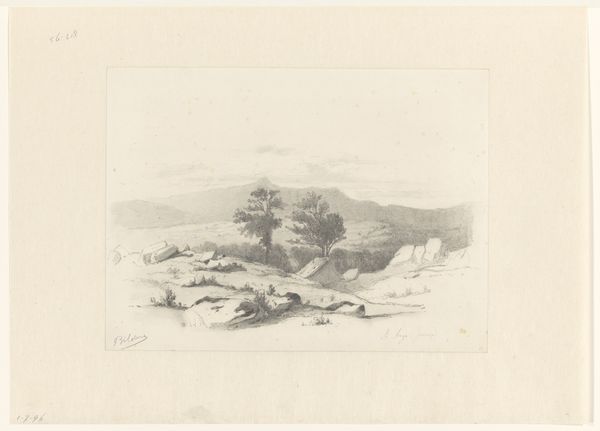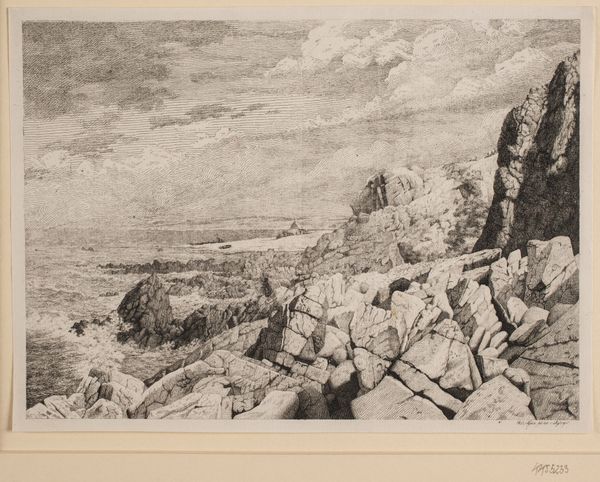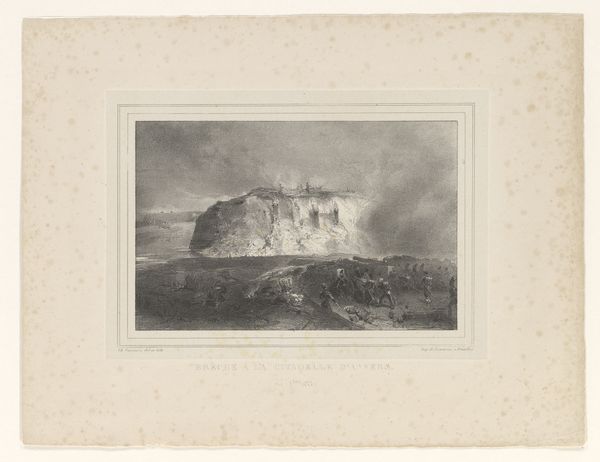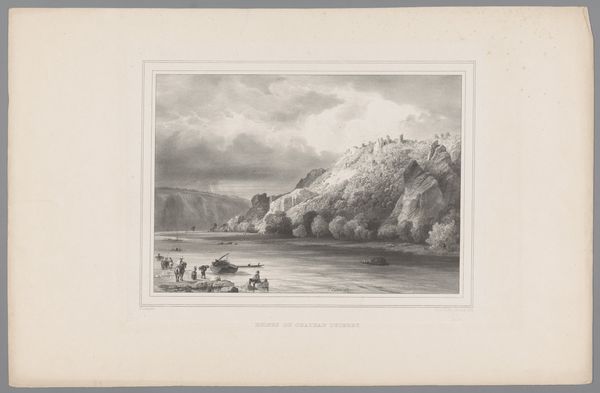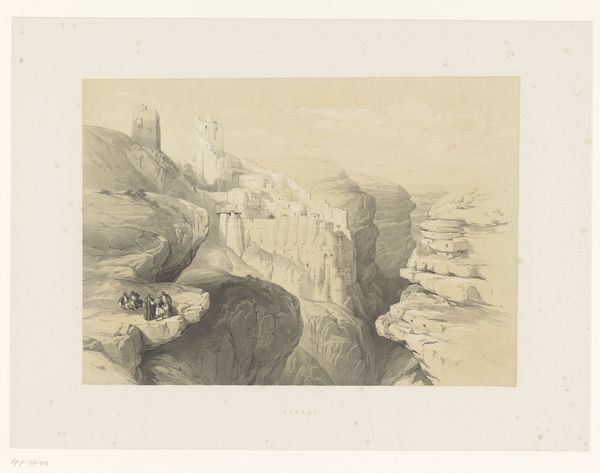
print, etching, engraving, architecture
# print
#
etching
#
landscape
#
romanticism
#
cityscape
#
engraving
#
architecture
Dimensions: height 359 mm, width 549 mm
Copyright: Rijks Museum: Open Domain
Curator: Paulus Lauters’ print, "Kasteelruïne van Agimont", completed between 1839 and 1841, strikes me immediately with its melancholic mood. There’s something about the ruined castle dominating the horizon. Editor: Indeed, the composition guides the eye upward to the fractured architecture. Observe how the texture created through the etching and engraving amplifies the visual drama. The use of line, tone, and texture, rather than bright colors, to convey emotional weight is masterful. Curator: Right, and ruined castles have a lot of symbolic meaning, usually about loss, power, and history fading. Think about the generations that probably lived within those stone walls. Lauters captures this poignant intersection of nature, decay, and memory. Editor: But how does it function structurally, irrespective of symbolic interpretations? Note how the dark tree to the left offers a crucial counterbalance to the pale ruin on the hill. This kind of visual tension is core to Romantic landscape traditions. Curator: Ah, but that dark tree could also symbolize the persistence of nature and time alongside those ruins; nature outlasting human creations. There's something deeply compelling in that image about human achievements fading while nature remains. The passersby in the foreground emphasize transience even more. Editor: You make an astute observation. Semiotically, we could analyze their positioning in relation to the distant town below, with the figures almost visually bracketed. What narrative relationship are they meant to elicit within this architectural frame? The arrangement creates this reading. Curator: Perhaps their inclusion suggests humanity's enduring connection to the land, despite changing power dynamics or social structures signified by both the fallen castle and the emergent town in the distance. Their positioning speaks to humanity in its enduring landscape and history. Editor: A plausible and nuanced perspective. Ultimately, this is precisely the merit of studying art. Through our contrasting interpretive methodologies, we unlock additional meaning. Curator: Agreed, looking beyond purely formal assessments enables a richer appreciation.
Comments
No comments
Be the first to comment and join the conversation on the ultimate creative platform.
